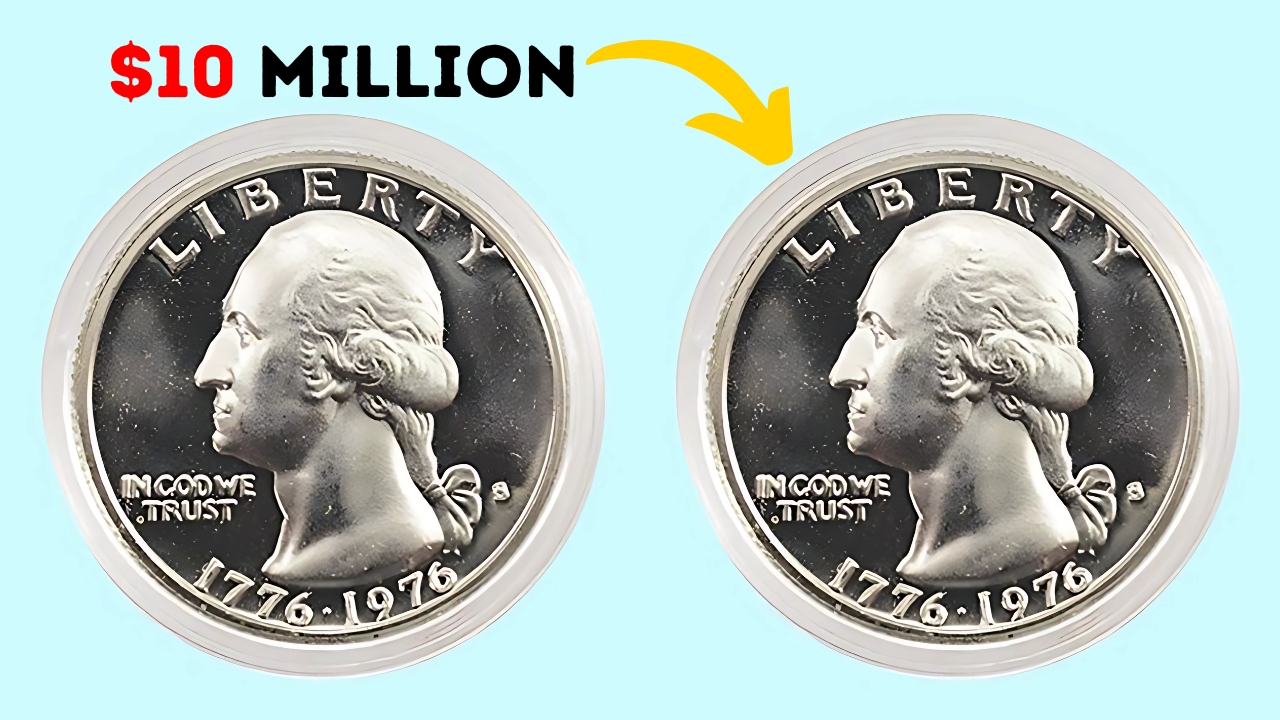5 Rare Bicentennial Quarters : Hidden treasures might be lurking in your forgotten change jars, beneath sofa cushions, or exchanged during everyday transactions. Within this collection lies five extraordinary Bicentennial quarters that have captured the imagination of numismatists everywhere.
Each of these rare coins boasts a jaw-dropping value of around $10 million, categorizing them as some of the rarest coins minted in American history. Between 1975 and 1976, a staggering 1.7 billion Bicentennial quarters were produced to celebrate the nation’s 200th birthday, yet only five are considered true unicorns.
The first coin is often called the “Dual-Strike Overlay,” created due to a remarkable combination of mint errors.
This quarter showcases two complete strikes at angles of 90 degrees to one another, leading to a captivating overlay effect that reveals both the drummer boy and colonial soldier images, visible from different perspectives.
Adding to the uniqueness, this coin features both copper-nickel and silver-clad compositions, presenting a mesmerizing metallic marbling that has never been documented in American coinage.
When viewed under specialized lighting, microscopic details suggest this coin was produced at the Denver Mint during the midnight shift on July 4, 1976. This serendipitous event significantly boosts its historical value.
The Missing Drummer Quarter: The Phantom Imprint
The second coin commanding a $10 million price tag exhibits a fascinating die error— the drummer boy design appears as a ghostly outline, discernible primarily through light reflection rather than through the tangible impression.
Known among numismatists as the “phantom imprint phenomenon,” this condition is exceptionally rare, with only three other instances found in American coinage history.
A microscopic analysis uncovered trace elements that matched experimental alloys the Treasury had briefly contemplated but subsequently rejected for the Bicentennial program. The mystery remains about how these elements found their way into production.
The Triple-Edge Quarter: Defying Physical Possibility
The “Triple-Edge Quarter” is perhaps the most perplexing to coin experts.
This coin features a seemingly impossible structure that comprises three edges: the standard reeded edge, accompanied by two additional raised bands that provide a unique terraced appearance when viewed from the side.
Former Mint Director Thompson noted that the Triple-Edge “simply shouldn’t exist within the physical limitations of modern minting processes.”
This impossible quality, along with its flawless strike and intact surfaces, greatly inflated its value after being authenticated in 2018.
The Silver-Core Quarter: The Secret Experiment
The fourth coin, valued at $10 million, is identified by collectors as having “the forbidden core”—a 99.9% silver center enveloped by a copper-nickel exterior.
Based on recently declassified documents from the Mint, a small experimental batch was created to explore options for special Bicentennial editions, but all were presumed destroyed when the Treasury decided against the expensive design.
Authentication revealed microscopic drill marks, indicating core samples were taken prior to the coin’s release. This suggests it underwent metallurgical testing before inexplicably avoiding destruction, forging a captivating historical narrative.
The Double-Date Quarter: Temporal Impossibility
The final $10 million rarity was found in a rural Minnesota cash register back in 2017 and features both the anticipated 1776-1976 dual date along with a partially visible 1975 date lurking beneath the expected dating.
Dubbed the “Double-Date” quarter, this coin contradicts every known production timeline, as the dual-dated dies were implemented only after the 1975 date dies had been retired.
Former Mint engraver James Ferrell speculated on an extraordinary scenario: “This coin represents a transitional piece where an unauthorized test strike occurred during die development—an event that should have resulted in destruction.”
Its existence could either be the result of intentional preservation by a mint employee or an unforeseen oversight in quality control.
The Hunt Continues
Though these five coins have been authenticated and currently rest in private collections or museum vaults, numismatic experts maintain that more examples might still be out there, unnoticed.
Despite the slim chances—estimated at one in 340 million—dedicated collectors continue scouring every Bicentennial quarter they encounter.
Pennsylvania coin dealer Eleanor Westbrook beautifully articulated: “These coins embody the perfect blend of historical significance, minting improbability, and extreme rarity.”
Finding one would feel akin to winning the lottery without ever purchasing a ticket, and unlike many treasures, these coins could be lurking in plain sight, perhaps in someone’s pocket right now, waiting to change a life forever.
If you’re feeling inspired to check your spare change, experts suggest looking for unusual weight, distinctive sounds when dropped, or visual anomalies when compared to standard Bicentennial quarters.
Keep in mind—the next time you receive your change while grabbing a coffee, you could very well be holding a fortune in your hand.






